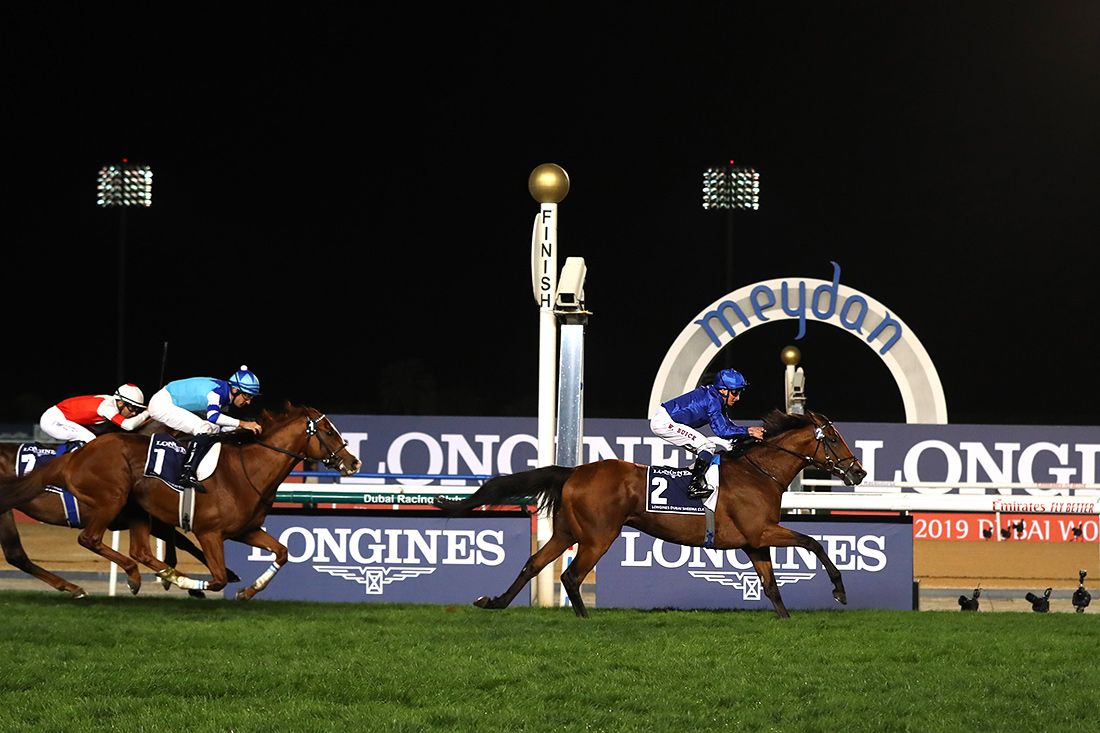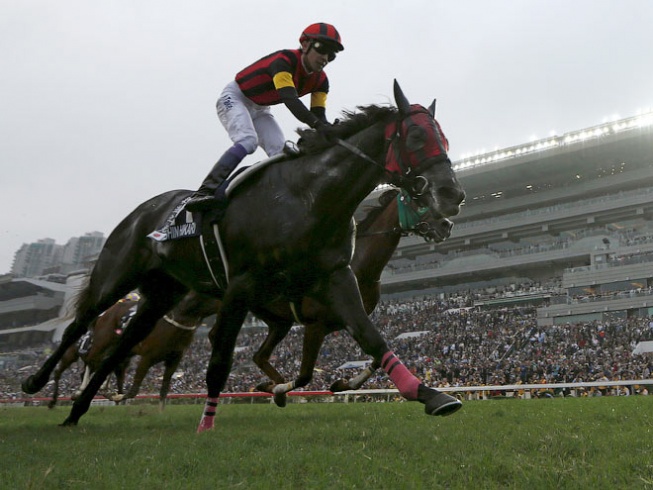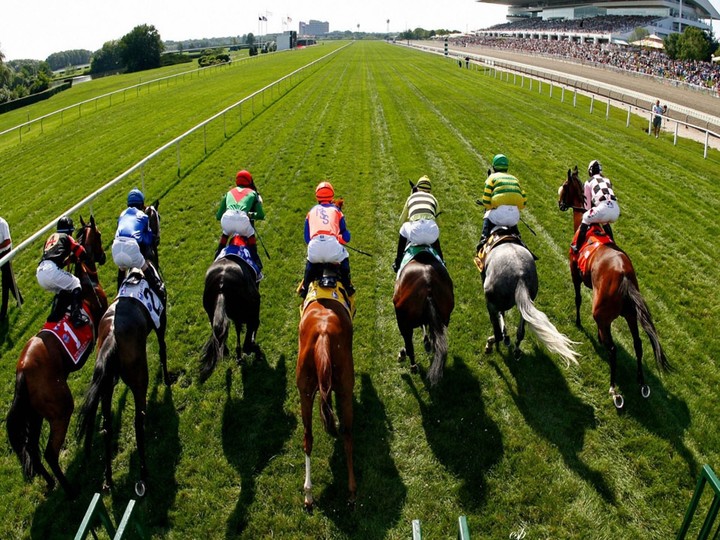Traditionally, racehorses were owned by very wealthy people. In the last few decades, horse ownership by syndicates or partnerships has become increasingly common. Notable examples include 2005 Epsom Derby winner Motivator, owned by the Royal Ascot Racing Club, 2003 Kentucky Derby winner Funny Cide, owned by a group of 10 partners. organized as Sackatoga Stable and 2008 Kentucky Derby winner Big Brown, owned by IEAH Stables, a horse racing hedge fund.
Historically, most racehorses have been bred and used by their owners. Since World War II, the commercial breeding industry has become much more important in North America, Europe and Australasia, with the result that since a significant portion of thoroughbred horses are now sold by their breeders either at public auctions or through private sales. In addition, owners can acquire thoroughbred horses by “taking” them out of the race (see Discussion of race types below).
The horse runs in its owner’s unique colors. These colors must be registered by the national governing bodies, and no two owners may have the same colors. The rights to certain colors (“cherished colors”) have the same value as distinctive automobile registration plates. Sue Magnier (owner of George Washington, Galileo, etc.) is said to have paid £50,000 for her distinctive dark blue colors. If the owner has more than one horse competing in the same race, a small color variant (usually a different color hat) or race club colors are often used.
The horse owner usually pays a monthly fee or, in North America, a “day rate” to his trainer along with fees for use of the training center or canter (if the horse is not attached to the racetrack), veterinarian and farrier (horseshoes) fees and other expenses such as death insurance premiums, entry fees and jockey fees. The typical cost of owning a racehorse for one year is about £15,000 in the United Kingdom and up to $35,000 at major racetracks in North America.
The opportunities available to trainers vary widely. Some trainers have only a few horses in their yard and are paid to use other trainers’ gallops. Other trainers have every conceivable training opportunity. It is a peculiarity of racing that a modest establishment can often withstand competition from larger players, even in a top-level race. This is especially true of national hunt races.

Values
In 1976, Canadian Bound became the first thoroughbred yearling racehorse to ever sell for $1 million when it was purchased at the July Keeneland sale by Canadians, Ted Burnett and John Sicura Jr.
Organizations
Ireland
Racing is regulated on an All-Ireland basis with two bodies sharing organizational responsibility. The Racing Ireland Regulatory Board is the rulemaking and enforcement body, while Racing Ireland regulates and promotes racing. In 2013, Ireland exported more than 4,800 thoroughbred horses to 37 countries, totaling more than 205 million euros ($278 million). This is double the number of horses exported annually from the U.S.
UK
In Great Britain, thoroughbred racing is regulated by the British Horseracing Authority (BHA), which sets and enforces rules, issues licenses or permits to trainers and jockeys, and runs races through race track officials. The jockey club in Great Britain has been relieved of its regulatory function, but still performs various support functions.
Much of the BHA’s work involves disciplining trainers and jockeys, including appeals of decisions made by track stewards. Disciplinary investigations usually relate to horse running, such as: failure to manage the horse on its merits, interference with other runners, excessive use of the whip. The advent of online betting exchanges has created opportunities for the public to bet on horses, and this development has been associated with some high-profile disciplinary proceedings.
To run under the rules, a horse must be registered with Weatherbys as a thoroughbred. It must also reside permanently in the yard of a trainer licensed by the BHA or a permit holder. Likewise, the owner or owners of the horse must be registered as owners.
Australia
Purebred racing in Australia is regulated from state to state. The Australian Turf Club manages racing in New South Wales, Victoria Racing Club is the responsible person in Victoria, Brisbane Racing Club was a merger in 2009 of Queensland Turf Club and Brisbane Racing Club, and manages racing in Queensland.
Flemington Racecourse in Melbourne, home of the Melbourne Cup, is the richest “two-mile” handicap in the world and one of the richest turf races. The race is held on the first Tuesday in November during the Spring Racing Carnival, and is referred to in Australia as “the race that stops a nation.”

U.S.
Race regulation and control in the United States is highly fragmented. Generally, the government agency in each U.S. state that conducts racing appoints license holders, coaches, and others involved in the industry, sets race dates, imposes drug restrictions, and other rules. However, pedigree issues and registration of racing suits are the prerogative of the Jockey Club, which maintains the American Breed Book and approves the names of all thoroughbreds.
The National Steeplechase Association is the official sanctioning body for American steeplechase racing.
Canada
Racing in Canada is regulated by the Jockey Club of Canada. There are several racing venues in Canada, but the main events are held mainly in Ontario and run by Woodbine Entertainment Group, formerly the Jockey Club of Ontario. While BC’s main venue is the Hastings Raceway with popular events such as the annual BC Derby.
Types of races
Purebred racing is divided into two codes: flat races and horse races. The most significant races are classified as Group Races or Set Stakes Races. Each governing body is free to set its own standards, so the quality of races may vary. Horses also run in different conditions, such as handicap races, age-appropriate race weights, or weight-appropriate races. Although usually considered to serve the purpose of gambling rather than determining the fastest horses, some of the most famous races in the world, such as the Grand National or Melbourne Cup. as handicappers.

Flat Racing
Flat races can take place at different distances and under different conditions. Historically, the largest flat racing countries have been Australia, England, Ireland, France and the United States, but other countries such as Japan and the United Arab Emirates have emerged in recent decades. Some countries and regions have a long tradition as major breeding centers, namely Ireland and Kentucky.
In Europe and Australia, virtually all major racing is done on turf (grass), while in the U.S. dirt surfaces (or, more recently, artificial surfaces such as Polytrack ) are prevalent. In Canada, South America, and Asia, both types of surfaces are common.
Horse Racing
Horse racing and steeplechase, called National Hunt in the United Kingdom and Ireland, are run over long distances, usually from two miles (3200 m) to four and a half miles (7200 m), and horses carry more weight. Many jumpers, especially those bred in France, are not thoroughbreds and are classified as AQPS. Novice races include horses that are just beginning their jumping careers, including horses that were previously trained in flat racing. National Hunt Racing distinguishes between obstacle races and chase races: the former are over low obstacles and the latter are over large fences that are much harder to jump. National chase races begin with a flag, which means the horses are lined up at the start behind a ribbon. Flat jumping is popular in Great Britain, Ireland, France, and some Central European countries, but is only a minor sport or completely unknown in most other parts of the world. National flat racing hunts (or “bumpers”) without fences or obstacles are also held to give experience to horses that have not participated in flat racing.

Horse breeding
In the major thoroughbred racing countries of the world, the breeding of racehorses is a huge industry, providing more than a million jobs worldwide. While the attention of racing fans and the media is focused almost exclusively on the horse’s performance on the racetrack or on the males, perhaps on his success as a sire, the breeding mares receive little attention. Such is the case with La Troienne, one of the most important mares of the 20th century, from whom many of the greatest thoroughbred champions and mothers of champions can be traced.
